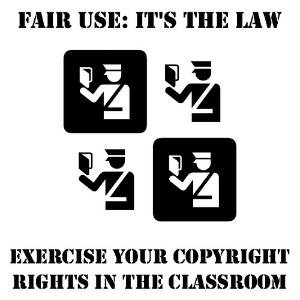- · What is Fair Use? Fair Use is described as (in US copyright law) the doctrine that brief excerpts of copyright material may, under certain circumstances, be quoted verbatim for purposes such as criticism, news reporting, teaching, and research, without the need for permission from or payment to the copyright holder.
- · Fair use is in place because it enables everyone to be able to use existing materials and ideas without having to get the permission of the person who created it, other known as the copyright owner. This allows us, especially as students, and teachers to have access to information and ideas without being afraid of using these sources. It defends our right to use these materials.
- · Check out this FairUse info-graphic to see more!
- · Statistic on Fair Use: Industries reliant on fair use contributed $2.4 trillion to the U.S. economy in 2008-2009, or approximately 17 percent of the US GDP. :
- · There are many teaching resources that are available because of Fair Use. Some of these include CPALMS and NSTA. As a future teacher I can pull lesson plan ideas from these sources and many others because of Fair Use.

sources:
- http://www.arl.org/focus-areas/statistics-assessment/3537#.WAQs4-ArLIU
- http://www.cpalms.org/Public/PreviewResourceLesson/Preview/19549
- http://www.nsta.org/publications/freebies.aspx
- http://www.ibpa-online.org/article/fair-use-and-other-aspects-of-coping-with-copyright-law/